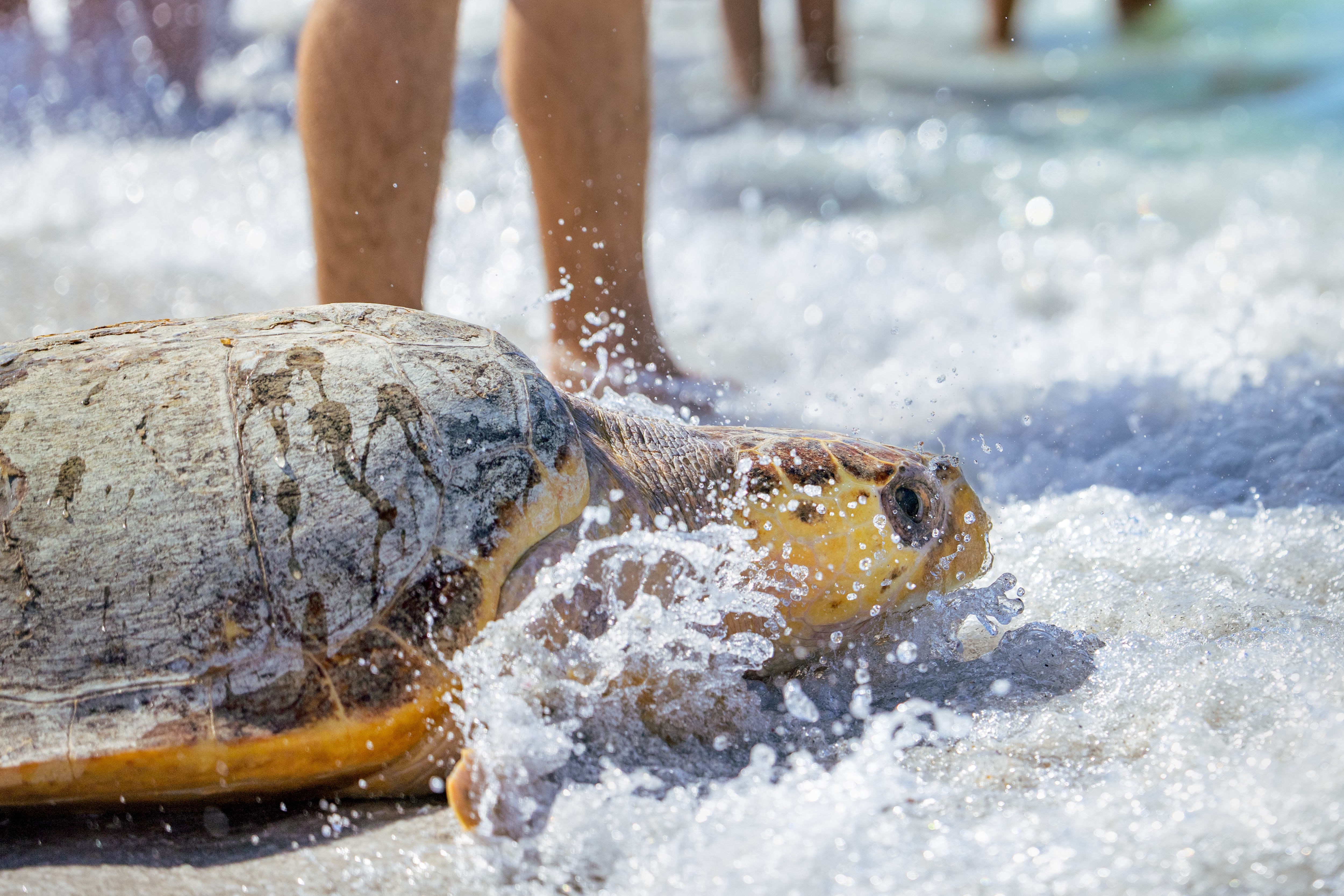It's Sea Turtle Nesting Season. Here's How to Keep Turtles, Nests and Those Tiny Hatchlings Safe.

Mote Marine Laboratory's Sea Turtle Conservation and Research Program (STCRP) documented the first local turtle activity of the 2025 season on Saturday, April 26. The STCRP team reported one loggerhead sea turtle nest on Longboat Key, one on Siesta Key and one on Casey Key. Comprised of STCRP staff, interns, and more than 300 volunteers, Mote's sea turtle patrol began its annual monitoring efforts on April 15, two weeks before the technical start of sea turtle nesting season.
“Even though sea turtle nesting season isn’t officially supposed to start until May 1, we begin patrolling early to ensure we catch the first signs of nesting on our beaches,” says Melissa Macksey, STCRP's senior biologist and data manager. “Thanks to our volunteers, interns and staff, we’re able to cover a large stretch of coastline and monitor for early nesters.”

During nesting season, the sea turtle patrol conducts daily surveys of all 35 miles of Sarasota County beaches, from Longboat Key to Venice. Each morning, team members scan the sand for signs of nesting activity and carefully document each nest. Staff and volunteers collect detailed data on nesting activity to track long-term trends and assess critical aspects of sea turtle ecology, including changes in the timing of nesting, nest density, hatching and emergence success, nest site selection and the influence of environmental conditions. Each nest is marked with yellow stakes and flagging tape to prevent disturbances while data collection continues.
Loggerhead sea turtles, the most commonly observed sea turtles in the region, are a threatened species protected under the U.S. Endangered Species Act. Sarasota County is also home to endangered green sea turtles and, in recent years, has occasionally hosted nests from Kemp’s ridleys turtles and leatherback turtles.
Mote’s monitoring has shown encouraging signs in recent years, including rising nest numbers along local beaches. In 2024, Mote documented nearly 4,400 nests from Longboat Key to Venice.

How to Protect Sea Turtles
During nesting season, it is important to keep local waters and beaches sea turtle friendly. Sea turtles swim just offshore to mate before females come ashore to nest. Juvenile turtles feed along the Gulf Coast, and by early summer, the first hatchlings will venture into Gulf waters.
On nesting beaches, light from waterfront properties can disorient nesting female turtles and their young, who emerge at night and use dim natural light to find the sea. Beach furniture, trash, and other obstacles can also impede sea turtles and their young. Here's how to keep them safe.
Onshore
- If you encounter a nesting turtle or hatchlings, remain quiet and observe from a distance.
- Shield or turn off outdoor lights that are visible on the beach from May through October.
- Close drapes after dark and stack beach furniture at the dune line or, ideally, remove it from the beach.
- Fill in holes that may entrap hatchlings on their way to the water.
- Do not approach nesting turtles or hatchlings, make noise or shine lights at turtles.
- Do not use flashlights or fishing lamps on the beach.
- Do not encourage a turtle to move while nesting
- Do not pick up hatchlings that have emerged and are heading for the water.
- Do not use fireworks on the beach.
On the Water
- Follow Coast Guard-approved safe boating guidelines and use vigilance to avoid striking sea turtles and other large marine life.
- Stow trash and line when underway. Marine debris that accidentally blows overboard or out of a truck can become ingested by or entangled around marine life.
- Wear polarized sunglasses to better see marine life in your path.
Emergency Contacts
If you see a sick, injured or stranded sea turtle, dolphin, or whale in Sarasota or Manatee county waters, contact Mote Marine Laboratory’s Stranding Investigations Program at (888) 345-2335. Outside of Sarasota or Manatee counties, call the Florida Fish and Wildlife Conservation Commission (FWC) at (888) 404-FWCC (3922).
If you suspect that someone is tampering with a sea turtle nest, harassing a sea turtle, or has possession of a sea turtle or any of its parts, call FWC or your local sheriff’s department. Sea turtles are protected under federal law and any harassment or interference with a sea turtle, living or dead, their eggs and/or nest marking materials is subject to penalty.



